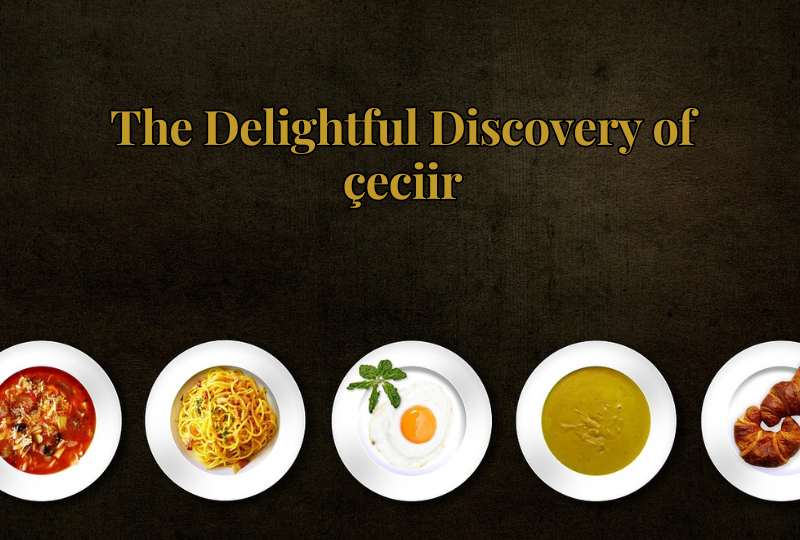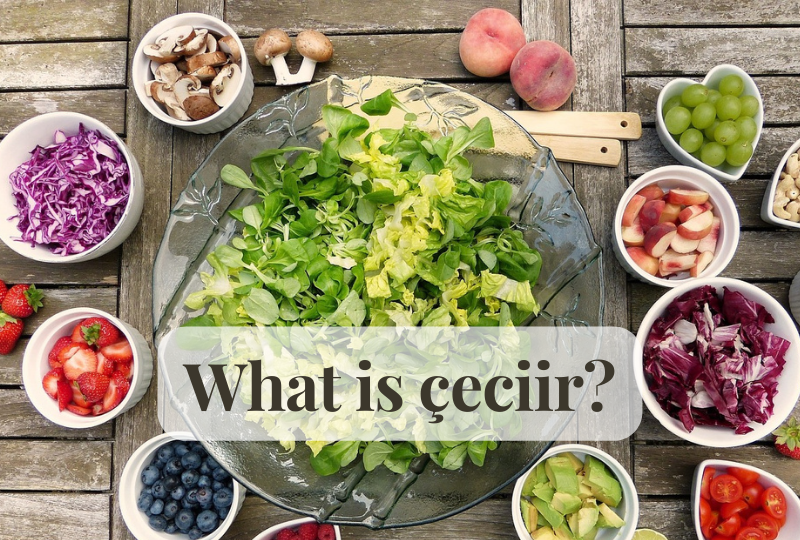FOR SALE
+92-300-1900991
FOR SALE
+92-300-1900991


Do you think you’ve tried everything you need to know about the world of beans, grains, and legumes? Think again. There’s a little-known Turkish delight that will turn your world upside down. Have you ever heard of çeciir? I didn’t believe it. It’s not exactly a household name outside of Turkey, but once you’ve tried it, you’ll wonder how you lived without it. çeciir are balls of chickpea flour that are fried or boiled and seasoned with mint, chili, or garlic yogurt. They are crunchy, chewy, salty, and extremely filling. Whether you snack on them on their own, add them to salads for extra protein and crunch, or dip them in a meze like hummus or çeciir, Chejir will tantalize your taste buds with its earthy flavor. So, think of this as a formal invitation to discover your new favorite legume-based addiction. Cheshire is waiting for you, my friend, and life as you know it will never be the same again.

çeciir is an ancient dish made from fermented grains from Turkey. It consists of wheat or barley grains that have been softened by immersion in water and then fermented. The result is a spicy, nutritious food that looks like porridge.
Cecir has been produced in Turkey and the surrounding area for centuries. The first known recipes date back to the 15th century. To make Chechnya, whole grains such as wheat berries, spelled, or barley are soaked in water for several hours or days until they soften and germinate. The sprouted grains are then crushed into coarse pulp and fermented for days or weeks.
During fermentation, natural lactic acid bacteria transform the grains into a tart, thin fungus. Chechiir gets it’s signature spicy, umami-rich flavor from these vibrant active cultures. Fermentation also breaks down grains, making their nutrients more digestible and useful.
Cechiir can be eaten sweet or salty. It is often garnished with ingredients such as kaymak (whipped cream), fruit jam, molasses, or honey. Salty variants can be supplemented with yogurt, spices, chili butter, or pickled vegetables. Chejir has a similar texture to porridge, oatmeal, or muesli and has a complex, nutty flavor with pleasant acidity.
This ancient, living food is rich in proteins, B vitamins, minerals, and probiotics. No wonder Çeciir has stood the test of time—it’s tasty and surprisingly healthy for you. If you have the opportunity to try this Turkish delicacy, don’t miss it. Your stomach and taste buds will appreciate it!
Several studies have shown that regular consumption of chair can help improve heart health. For example, a study published in the Journal of the American College of Nutrition found that participants who regularly ate chickpeas had lower LDL cholesterol levels (the “bad” kind) than those who didn’t. Another study published in the Journal of Nutrition found that eating chickpeas was associated with lower blood pressure.
One of the reasons Chechiir is so good for heart health is that it’s high in fiber. Fiber is important for lowering cholesterol and preventing plaque from building up in the arteries. In addition, chickpeas are a good source of potassium that can help lower blood pressure.
If you’re attempting to lose weight, increasing the amount of food in your diet may be an effective strategy. The high protein content of chickpeas helps to sustain your sensation of fullness for extended periods. Furthermore, because chickpeas are so low in calories, you may be able to maintain your usual calorie consumption without feeling hungry or constrained.
Several studies have shown that eating chickpeas can lead to improvements in body weight, body composition, and waist circumference. For example, a study published in the journal Nutrients found that overweight or obese participants who ate chickpeas for 12 weeks lost an average of 1.2 pounds and had less body fat and waist circumference.
If you’re looking for ways to incorporate more çeciir into your weight loss plan, try using it as a substitute for high-calorie foods like meat or cheese. You can also mix chickpeas into smoothies or use them to make low-calorie sauces and spreads.
In short, çeciir invites us to enjoy not only the taste but also the rich mosaic of history, culture, and innovation that surrounds it. As we embark on our culinary adventures, the mystery of the “çeciirs” continues to captivate our taste buds.
Is “çeciir” suitable for vegetarian diets?
Absolute! “Çeciirs” is a fantastic source of plant-based protein.
Are there rare varieties of “çeciir”?
Some varieties of “chewier” are rare and appreciated for their unique taste.
Can you grow Chaejisr indoors?
While it’s best to grow outdoors, you can try growing smaller strains indoors.
Why is “çeciir” such a cultural mainstay?
Its cultural relevance is influenced by its adaptability, nutritional worth, and historical significance.
Where can I get recipes for unique “çeciirr” food?
Many distinct “çeciiir” recipes may be found in international cookbooks and online food portals.
[…] Read More: The Delightful Discovery of çeciir […]
[…] Read More: The Delightful Discovery of çeciir […]
[…] READ MORE: The Delightful Discovery of çeciir […]
[…] 5 seconds ago […]
[…] Read More: What is çeciir? […]
[…] Read More: The Delightful Discovery of çeciir […]
[…] Read More: The Delightful Discovery of çeciir […]